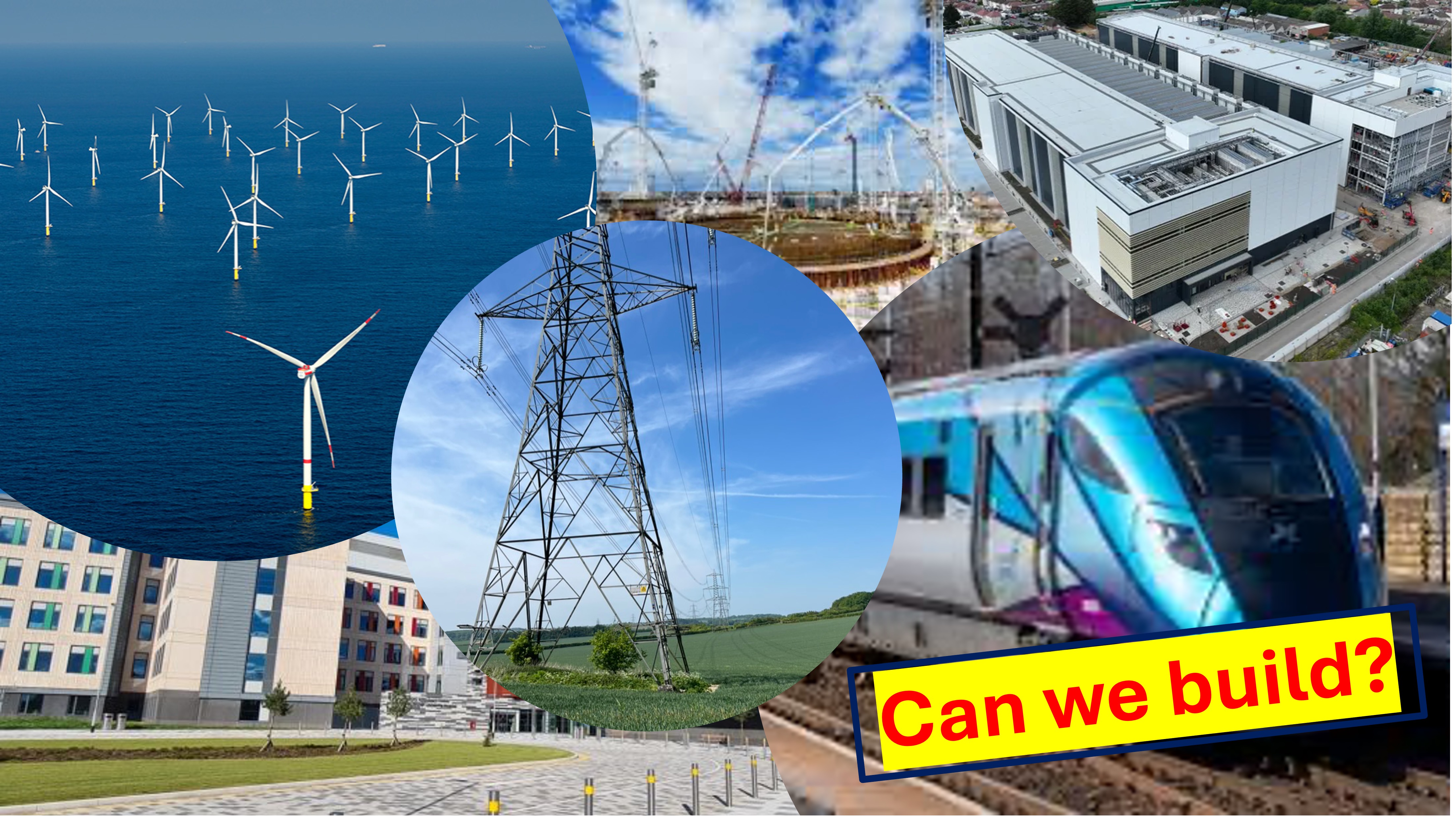This is Blog No 105
Anyone reading the 100-page UK Infrastructure Strategy will be impressed – but maybe also confused - by the size of the high-sounding sums which an ambitious Government seeks to spend in the coming decade. As these matters go, it is relatively uncontroversial. Much of it is eminently sensible, and one wonders why it has taken till 2025 to bring together the disparate strands of policy and investment so that the UK can tackle its infrastructure challenges.

There are some real positives:
- A belated acknowledgment that an effective infrastructure strategy is more than the sum of separate plans for different types of investment. Since 2008, we have consulted upon and adopted 12 National Policy Statements (NPSs) – covering, road, rail, energy, aviation and so forth. And overlaying these, agenda-setting legislation on net zero that often seems at odds with the NPSs. It is this inherent conflict that has led to many Judicial Reviews – not the consultations that have exposed the inconsistencies. A new single body called the National Infrastructure & Service Transformation Authority (NISTA) will oversee the lot!
- An ambitious attempt to cover not just the economic infrastructure (transport, water, energy etc) but also the social infrastructure (schools, hospitals, prisons etc). This is far more difficult, given the way that Government funds and builds such facilities. But examine the reasons for opposition to housing and other development, and we often find that the cause lies in communities’ anxieties that no-one looks to manage both sides of the infrastructure requirement.
- A better sense of ‘place’ as being the area where these various investments need to be made in a coherent way. So, on paper, the strategy proposes a major role for Mayoral Strategic Authorities so that Manchester and the other dozen super-Councils can initiate and secure the building of the right infrastructure for their patch. As local government is further reorganised in units large enough to make infrastructure sense, it seems possible to make this work. Add to the mix, the evolution of the last Government’s Local Growth Plans, and we have a potential vehicle for agreeing a local programme for infrastructure build and renewal.
Great – but I have a nagging doubt.
With a few ‘generic’ exceptions, the Strategy says little or nothing about stakeholders – or indeed anything of substance about engaging and consulting them. The closest we get is the Government’s evident satisfaction at having finally removed from infrastructure developers any statutory requirement for ‘pre-application’ consultation.
There are two interpretations for this omission. Either it’s a regrettable failure to understand how important this is. Or it’s all implicit anyway and everyone realises that unless you consult stakeholders properly, you’ll build less and later.
For the avoidance of doubt, many experienced developers and project managers understand perfectly, the case for public and stakeholder engagement. We just don’t always do it very well.
The recent Governance and Assurance Review of HS2 – the Stewart Review illustrates the problem. It quotes the famous Bent Flyvbjerg dictum that “projects don’t go wrong; they start wrong.” and claims that HS2 went ahead too quickly, driven by politicians and BEFORE the project’s scope and basic design was sufficiently mature to enable a reasonably accurate cost projection. The Stewart Review is clear: “The fundamental tenet of a successful project is the clarity and stability of requirements and scope, and this has rarely been the case for HS2”. Taken alongside a culture of gold-plating, and politicians wanting to build the ‘best in the world’, Stewart says that "schedule has been prioritised over cost." Hence the frightening cost overruns that led to cancelling the greater part of the original concept.
Better stakeholder management and consultation does not fix all these problems; never underestimate the power of politicians to disrupt the best-laid plans. But whilst NISTA and the infrastructure industry chews over the start of a new era and embarks upon this new 10-year strategy, it would be well to take account of three things.
- In contrast to recent Government rhetoric, consultation is NOT just an opportunity for NIMBYites and ‘blockers’ to have a say, but an essential tool to help designers and engineers agree a stable set of requirements that won’t then have to be amended when public acceptance or acquiescence becomes an issue. In other words, it is an essential fail-safe.
- Effective stakeholder management is about continuity of relationships and the ability to ride the ups and downs of a project’s environment in spite of unanticipated external shocks. It needs experienced people able to cultivate and preserve credibility and mutual trust. These are not tasks for an office junior. Stakeholder management is a Chief Officer responsibility.
- Long-term projects – in transport, energy, water and much else – requires the development of convincing narratives with a vision that the general public can support. The UK oscillates between the culture of British ‘exceptionalism’ (eg Boris Johnson - and others' claims/aspiration to be the ‘world’s best’) and a weary scepticism that nothing works any more. Those who wish to build more and better infrastructure need to harness the imagination and creativity of the best of us to make the case for such investment and provide a goal that our communities will pursue and champion.
None of this happens without a commitment to wide-ranging and professionally-conducted dialogue.
I just wish the Ten-Year Strategy had mentioned it.
Rhion H Jones LL.B
For more like this, and to receive the monthly Consultation Catch-up, click here
Leave a Comment
I hope you enjoyed this post. If you would like to, please leave a comment below.